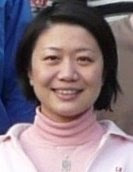
Monday, August 10, 2009
ICWL'09 Program online
Niels and I have finished our ICWL Program in PDF finally. We just extended the program created by Marc, by adding the social program, venue information, and a welcome message from the General Chair Prof. Jarke. A detailed travel information file is also available at the ICWL'09 Web site. The proceedings - Advances in Web Based Learning - ICWL 2009: 8th International Conference, Aachen, Germany, August 19-21, 2009, Proceedings: 5686 (Lecture Notes in Computer Science / Information Systems and) (Paperback) edited by Ralf, Marc and the others - has also been published by Springer. We are looking forward to all participants at ICWL'09 taking place in Building Super C at RWTH Aachen University next week.


Saturday, August 08, 2009
Hackesche Höfe and Hackescher Markt, Berlin

As I attended the conference Intercarto Intergis 12 (2006) in Berlin, we were very lucky to have a nice conference organizer, Mr. Horst Kremer, who took us to many interesting places in Berlin as a local guider. I was struck by the Hackesche Höfe (Hacke’s Courtyards), which is located just at the Hackescher Markt (Hacke’s Market) at the subway station stop with the same name. It is the No. 1 sightseeing in Berlin from the locales’ viewpoint. Usually for the tourist, Brandenburg Tor and the others might be more famous worldwide. So I missed the courtyard, as we visited Berlin in 2003 for the first time.
What’s the special that makes the “Berliner” so proud of their Hackesche Höfe? It must be easy for each Chinese originally from Shanghai, if I say Hackesche Höfe is just another Xintiandi (新天地). There must also be similar places in other cities in China.
Hackesche Höfe contains 8 courtyards in all. The façades are diverse and colorful. Diversity is shown in the different façade building material ranging from mosaic bricks to common bricks, in the different colors used in one façade. This wall is in blue and white, while its neighbor wall is in orange. The architectural style is also a mixture. The German architect August Endell is an Art Nouveau architect who also studied philosophy and psychology. This expertise and academic backgrounds are quite special for architects. Maybe, this is why his design can still attract so many people 100 years later. Hackesche Höfe was opened in 1906. The idea is to have a common outdoor salon for many companies, clubs, as well as residential parts in this building complex. So people can share the courtyards to get certain atmosphere to have some events in common. This idea is still advanced, like many lofts in the office-shopping buildings and Xintiandi. It also proves that advanced ideas are based on the modernism principle “form follows function”. Since the courtyards are for the sharing purpose, they should have the versatility to meet preferences of enterprisers, businessmen, artists, and habitants. August Endell also applied Neo-baroque roofs and Egyptian Obelisks. However, at my first impression, Hackesche Höfe has the Art Déco style, though Art Déco was in fashion nearly 20 later than it was built. Maybe I was just impressed by the vertical lines on the façades.
Hackescher Markt has a longer history with the first document about 1672. It was a new center for barn areas in old Berlin. Later on, it developed to a commercial center with many Jew residents. After the World War II, it lost its prosperity in East Berlin, though it has been a German cultural heritage piece since 1972. The renovation work started in 1993 after the reunion of Germany. Since then it is a favorite place in Berlin with restaurants, cafés, galleries, workshops, and still flats. The immobile price in that area also becomes one of the most expensive areas, Just like Xintiandi.
There are still some differences between Xintiandi and Hackesche Höfe. Hackesche Höfe has just succeeded its original use function after the WWII and DDR break, while Xintiandi was redesigned to create such an entertaining environment with the old Shikumen (石库门 or “stone gates”) which was original designed only for living. It was stated in Wikipedia that Hackescher Markt was once Marx-Engels-Forum. But I don’t think. It is true that Xintiandi has an important historic memorial building in the neighborhood. Both have many new elements after the renovation. I assume some glass façades in Hackescher Markt might not be from 1906, but be built lately.
Subscribe to:
Comments (Atom)




